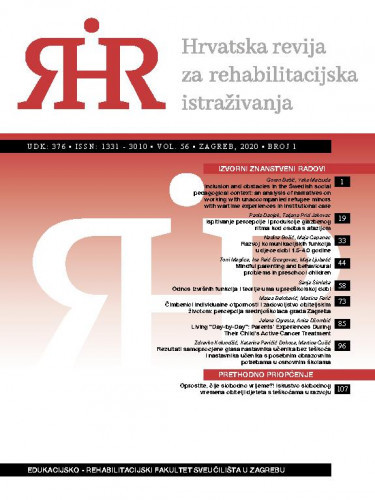Za razumijevanje i kreiranje logopedskih tretmana za osobe s neurogenim komunikacijskim, jezičnim i govornim poremećajima, poput onih namijenjenih osobama s afazijom netečnog tipa, potrebno je istraživati vezu između ritma i govora. Cilj opisanog istraživanja, u kojem je sudjelovalo 10 ispitanika s afazijom i 10 prosječnih govornika, bio je otkriti postoje li teškoće percepcije i produkcije glazbenog ritma kod osoba s afazijom, ispitati postoje li razlike između percepcije i produkcije glazbenog ritma kod iste skupine ispitanika te utvrditi postoji li povezanost između postignuća na zadacima auditivnog razumijevanja riječi i rečenica te sposobnosti percepcije i produkcije glazbenog ritma kod obiju skupina ispitanika. Protokol za ispitivanje percepcije i produkcije ritma kod osoba s afazijom, koji sadrži zadatke za percepciju i produkciju glazbenog ritma, kreiran je za potrebe ovog istraživanja. Statističkom analizom podataka utvrđena je statistički značajna razlika između sposobnosti percepcije i produkcije glazbenog ritma kod osoba s afazijom. Usto potvrđena je statistički značajna razlika između postignuća skupine osoba s afazijom i kontrolne skupine ispitanika. Ovim istraživanjem nije utvrđena statistički značajna povezanost između postignuća na zadacima auditivnog razumijevanja riječi i rečenica i sposobnosti percepcije i produkcije glazbenog ritma kod obiju skupina ispitanika. Analizom odgovora ispitanika otkrivene su značajke ritamskih obrazaca koje ispitanici najbolje, odnosno najlošije percipiraju i reproduciraju.; Exploring the relationship between rhythm and speech is necessary for understanding and creating speech therapies for people with neurogenic communication, language and speech disorders, especially people with nonfluent aphasia. The aim of the present study, involving 10 subjects with aphasia and 10 average speakers, was to examine whether there are difficulties in musical rhythm perception and production in people with aphasia, to find out whether there are differences between musical rhythm perception and production within the same group of subjects and to determine whether there is a correlation between achievement on tasks of auditory comprehension and rhythm perception and production. The Protocol for Assessment of Rhythm Perception and Production in People with Aphasia, which consists of musical rhythm perception and production tasks, was created for the purpose of this study. A statistically significant difference was found between the achievement of people with aphasia and the control group on the applied tasks of rhythm perception and production. A correlation was not found between rhythm perception and production and achievement on tasks of auditory comprehension, among either people with aphasia or the control group. Analysis of the subjects’ answers revealed the features of the rhythmic patterns that make it easy or difficult to perceive and reproduce a rhythm.
Sažetak

 Hrvatska revija za rehabilitacijska istraživanja : 56, 1(2020) / urednica, editor Jelena Kuvač Kraljević
Hrvatska revija za rehabilitacijska istraživanja : 56, 1(2020) / urednica, editor Jelena Kuvač Kraljević